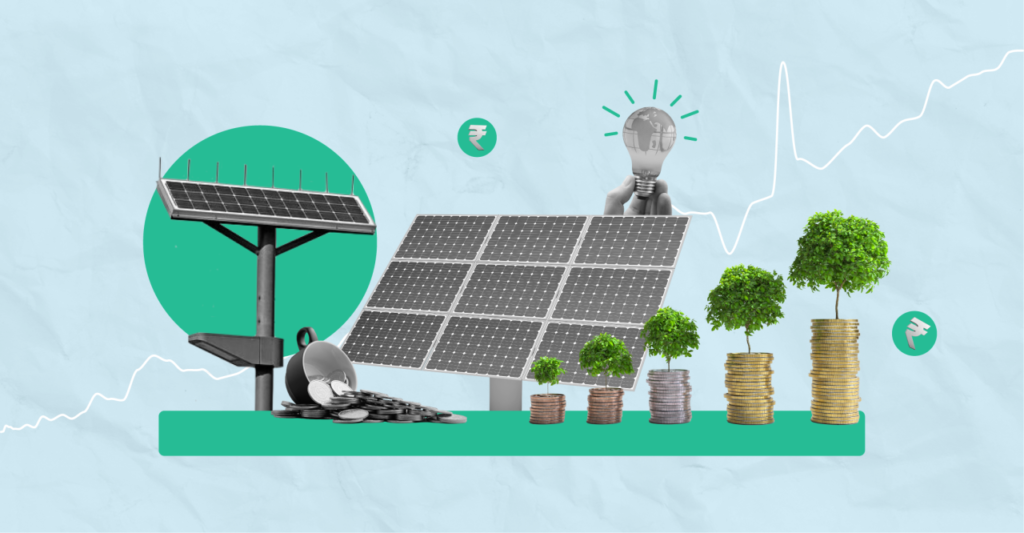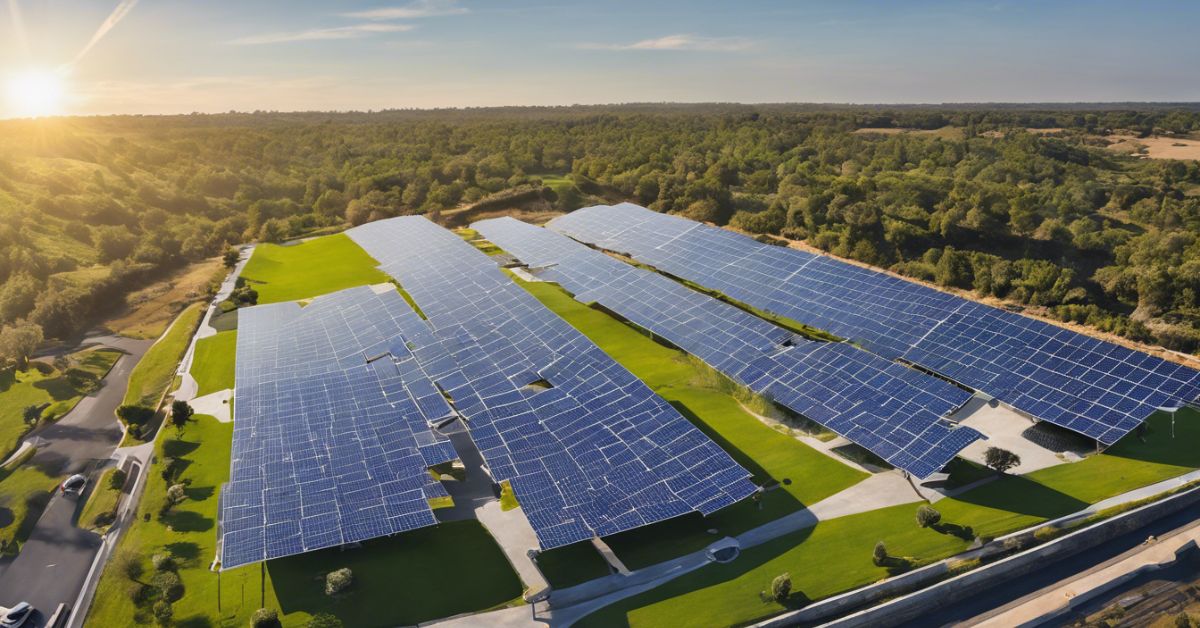Businesses worldwide seek sustainable and affordable energy. Commercial solar is a beacon of hope. It offers an eco-friendly alternative to fossil fuels and has significant financial incentives. The switch to solar power is not just a green statement.
It is a smart business choice. It has many benefits, from lower bills to better public opinion. Using commercial solar power shows forward thinking. It is a part of corporate responsibility and environmental stewardship.
This article explores the strategic benefits of commercial solar energy subsidies. It emphasizes their role in speeding return on investment and keeping energy prices stable in the long term. It covers the importance of the solar tax credit. It also covers the impact of solar rebates. It also covers the role that solar sales play. They encourage businesses to embrace solar.
1. Long-term energy price stability

Businesses gain a lot from installing solar panels. They fix their electricity prices for the system’s long 25 to 30-year lifespan. Traditional energy prices fluctuate, making stable rates incredibly valuable. Businesses also gain advantages from fixed monthly costs lower than electricity bills. This cost stays stable, unlike variable bills. It helps businesses plan and avoid unexpected spikes in energy expenses.
Also, the financial gains are clearer after the initial investment is recovered. Solar panels have a high return on investment. Once you pay off the loan, the cost savings will turn into profit. Also, the investment in a solar power system adds to a business’s assets. It doesn’t cover expenses like utility bills.
The savings from solar energy can vary. This is based on factors such as the business’s electricity use. It also considers the solar system’s size, its purchase or lease agreements, the sunlight received, and local electricity rates. Still, despite these variables. The main benefit is that a solar electric system is a low-risk, long-term investment. It promises lower monthly utility bills and a stable financial outlook.
2. Accelerated Return on Investment (ROI)

Firms are considering investing in solar energy today, which can give them a high ROI. Companies can accelerate their investment returns using the current low equipment prices and strong federal and local incentives. The Inflation Reduction Act introduces two significant solar tax credit alternatives and increases federal tax credits.
Tax Credit for Investments (ITC)
The Investment Tax Credit offers a dollar-for-dollar tax credit in the year the system is put into service. It’s equal to 30% of the whole project cost. A company investing $100,000 in solar can cut its federal tax by $30,000 in the first year. But it only gets this if it takes advantage of this tax break. It will stay at 30% until at least 2032.
Production Tax Credit (PTC)
Alternatively, businesses may choose the Production Tax Credit. It is especially good for big commercial or utility-scale systems. The PTC is based on the electricity produced by the system and is paid annually for the first ten years. For projects under 1 MWac, the rate is $0.027/kWh, and for larger projects that meet specific criteria, it is $0.021/kWh.
3. Accelerated and Bonus Depreciation
Businesses can also benefit from tax deductions through accelerated and bonus depreciation. The Modified Accelerated Cost Recovery System (MACRS) lets businesses recover the costs of solar PV systems. They have done so for over five years. Additionally, bonus depreciation lets businesses write off much of the system’s cost. They can do this in the first year they operate. The basis for depreciation is cut by half of the tax credit amount. So, if a 30% ITC is claimed, the depreciable basis would be 85% of the total cost.
- By using the above mechanisms, you can calculate the net federal tax benefit for a $100,000 solar system. This is for a system claiming the ITC.
- Bonus Depreciation Calculation: $85,000 (depreciable tax basis) x 0.80 = $68,000
- Accelerated Depreciation Calculation: ($85,000 – $68,000) x 0.20 = $3,400
- Total Impact on Tax Liability in Year One: ($68,000 + $3,400) x 0.21 = $14,994
Adding the ITC would reduce the total tax liability for that year to $44,994. This nearly halves the cost of the system due to tax benefits. This brings significant and lasting cost savings. They combine with big federal, state, and local incentives. These incentives make now a suitable time for businesses to invest in solar energy.
4. Business Investment Tax Credit

Overview of the Business Investment Tax Credit
Businesses that invest in solar energy systems might get a big tax reduction. They can get it through the Business Investment Tax Credit (ITC). Under the ITC, businesses can exclude a portion of the cost of installing a solar system from their federal tax obligations. This credit offers instant financial assistance. It is direct and not based on system performance.
Benefits of the Business Investment Tax Credit
The potential of the ITC to drastically lower upfront expenditures is one of its main advantages. For example, a company that installs solar for $100,000 will pay $30,000 less in taxes. They will do this the year the system is put into service.
This reduction is at a fixed rate of 30% until at least 2032, thanks to the provisions of the Inflation Reduction Act of 2022. Also, the project may get extra credit if it meets certain criteria. For example, it must use U.S.-made parts or be in special energy communities. These could raise the returns beyond 30%.
Business Investment Tax Credit Eligibility
The solar system must be in the United States or its territories. ITC eligibility demands equipment that is mostly new or lightly used. Tax-exempt businesses claim the ITC directly, but leasing is not an option. Also, projects need to meet the labor standards set by the Treasury Department.
These standards include paying prevailing wages and hiring a specific proportion of apprentices. Meeting them is needed to get the full ITC or PTC. Also, if the main function of the structure is to generate electricity and all other uses are minor, then the structure may qualify.
5. Government incentives and tax credits
Governments at various levels offer various incentives to encourage the adoption of solar energy. These incentives are crucial. They reduce initial costs and speed up the payback for commercial solar projects.
Federal Solar Incentives
The Solar ITC is a big federal incentive. It lets entities deduct 30% of the cost of a solar system from their federal taxes. This credit is available until 2032, after which it will decrease to 26% in 2033 and 22% in 2034 before expiring in 2035 unless Congress extends it.
State Solar Incentives
Many states offer additional incentives, such as state tax credits, which do not reduce the federal tax credits. These state-specific incentives can greatly increase the financial benefits of installing solar systems and allow further deductions on state taxes.
Local Solar Incentives
Incentives at the local level consist of property tax relief and rebates. Rebates are partial repayments made after the purchase and installation of a solar system. Utility companies or local governments offer them. Exempting solar systems from property tax assessments can cut property taxes and greatly reduce the tax burden on property owners. There are some things you should keep in mind before buying a solar panel.
These tiered incentives help companies make the most of their investment in solar equipment. They create a solution that is both practical and cost-effective. Each incentive helps the plan to encourage renewable energy. They also show dedication to the environment and stable energy prices.
6. Net Metering and Feed-in Tariffs

Commercial companies that install solar systems have much to gain from net metering. It lets them get credits for the extra energy they produce and feed into the grid. This technique makes invoicing easier. It only charges for net energy use. Net energy use is the energy used less the energy produced. It credits solar energy system owners at the retail rate they would typically pay for power.
Businesses have the legal authority to net meter in many areas, which can result in much lower electricity costs. Forty-three states, including Washington, D.C., have adopted net metering. This shows its wide acceptance and benefits for the system and energy producers.
Net Metering Explained
Commercial businesses with solar panel systems benefit from net metering. It allows their electric meters to run in reverse when they make more electricity than they use, cutting their utility bills. This can lead to substantial savings, potentially offsetting all energy costs within a billing cycle. Furthermore, net metering supports the grid by letting others use solar power. This reduces the demand from non-solar customers and eases stress on the grid.
Feed-in Tariff Benefits
Feed-in tariffs offer a different approach. They give renewable energy producers a guaranteed payment above the market rate. It is for electricity sent back to the grid. The rates can change based on when and where energy is generated. They often result in payments that exceed the retail electricity rate. This incentivizes the adoption of solar technology. Feed-in tariffs are useful early in renewable energy development. They offer long-term contracts and prices tied to production costs. This setup encourages investment and cuts financial risks.
Energy Bill Reduction Potential
Feed-in tariffs and net metering both substantially contribute to lower energy costs for businesses. Companies can increase their return on investment by offering a way to earn points or get paid for extra energy, which also reduces payback times. These incentives also support sustainable energy, making solar systems good for the environment and cost-effective.
7. Good Public Relations and Branding
Commercial solar incentives can help your company establish favorable branding, which is one of the main reasons to use them. Investing in solar electricity and other sustainable energy sources shows your company’s dedication to these goals. They are also environmentally friendly.
Installing solar panels at your business can show your dedication to cutting emissions and promoting clean energy. This can set you apart from competitors who have not taken similar steps towards sustainability. Consumers are increasingly looking to support businesses that align with their values, including those related to environmental conservation.
The correct mounting brackets matter a lot. They help your panels last longer, handle harsh weather, and produce the most power.
Conclusion
The advantages of commercial solar subsidies are strategic. They show that switching to solar power is not only wise financially but also good for the environment for businesses. Solar energy has shown its value to sustainable business. It brings long-term energy price stability. It also leverages the potent impact of fast investment returns.
These insights cover many incentives, such as tax credits and rebates. They also cover programs like feed-in tariffs and net metering. They show how businesses can cut their upfront expenses and boost their profits. So, they highlight the many benefits of switching to solar energy.
FAQs
What are the top five advantages of using solar energy in residential areas?
The five key advantages of residential solar energy include:
- Solar panels have become more affordable.
- Solar energy can lead to significant savings on electricity bills.
- Solar power systems provide backup power during grid outages.
- Installing solar panels can increase your home’s market value.
- Solar energy systems are effective in diverse climatic conditions.
What advantages does solar power offer to businesses?
Commercial solar energy offers many benefits. These include lower energy costs. They also give a better public image for businesses. There are potential tax incentives and a reliable power supply. This supply may protect against grid problems.
Can you list five pros and cons of solar energy?
Solar energy has many benefits, like cost savings, reliability during power outages, and environmental conservation. But it also has some drawbacks. These include the cost of installation, the need for enough roof space. Power output’s variability is based on weather. Aesthetic concerns and the challenge of storing solar energy well.
What are the benefits of establishing a solar energy farm?
Solar energy farms contribute positively by generating clean and renewable electricity. They are crucial for protecting the environment. They do not make greenhouse gases or air pollutants. This helps in reducing the overall carbon footprint and mitigates the negative impacts of climate change.


